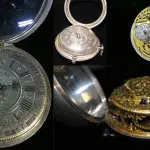
Pete Hamill, legendary New York columnist, has died
NEW YORK — Pete Hamill, the self-taught, street-wise newspaper columnist whose love affair with New York inspired a colorful and uniquely influential journalistic career and produced several books of fiction and nonfiction, died Wednesday morning. He was 85.
Hamill died in Brooklyn, New York, his brother Denis confirmed in an email.
“Pete was truly one of the good guys,” Denis Hamill said.
Pete Hamill was one of the city’s last great crusading columnists and links to journalism’s days of chattering typewriters and smoked-filled banter, an Irish-American both tough and sentimental who related to the underdog and mingled with the elite. Well-read, well-rounded and very well connected, Hamill was at ease quoting poetry and Ernest Hemingway, dating Jacqueline Onassis or enjoying a drink and a cigarette at the old Lion’s Head tavern in Greenwich Village.


